Promoting Hakka Culture: Taiwan Tech General Education demonstrates the art of opera.
Blending technology and aestheticl across disciplines, Taiwan Tech General Education Students present Hakka cultural insights through opera performance. Culture is a living memory and the embodiment of aesthetic heritage. In every smoke-filled valley of Taiwan's Hakka villages lie treasured local traditions. As part of a Hakka Affairs Council-supported course initiative titled "Exploring the Aesthetics of Hakka Opera Costume and Makeup", students from Taiwan Tech engaged in cross-disciplinary learning that combines technology with the arts. Through the dynamic and expressive medium of Hakka opera, students were guided to experience the cultural richness of Hakka traditions. By learning through doing - and doing through learning - they explored ways to merge traditional cultural aesthetics with their own creative expression, culminating in an end-of-semester performance that embodied both innovation and heritage.
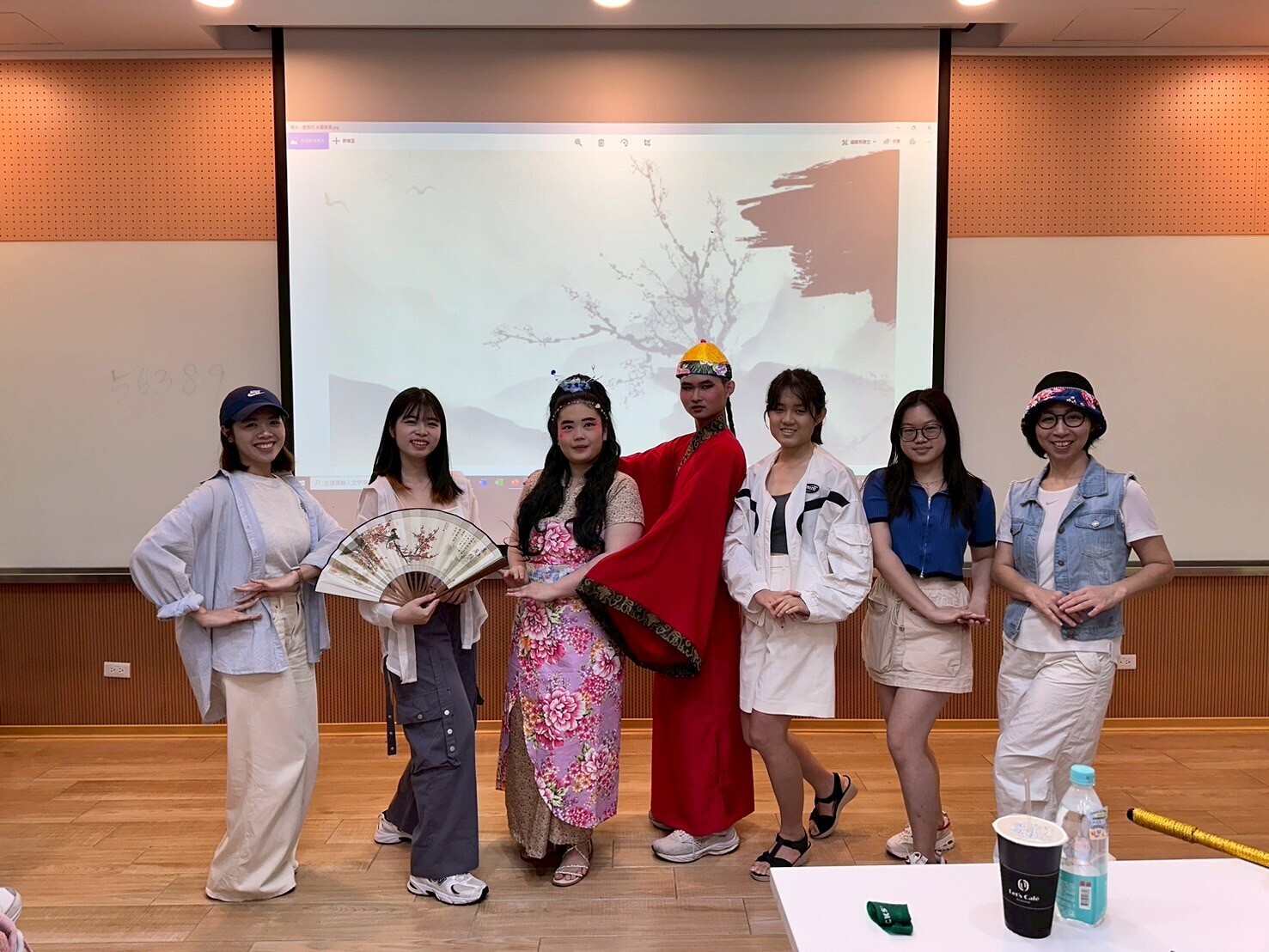
On the day of the performance, Professor Mei-Fang Shih (first from right) invited Hakka opera performer and researcher Meng-Shan Chiu (first from left) to provide evaluation and guidance.
Professor Shih Mei-Fang emphasized that complementary learning plays a vital role in interdisciplinary education. To avoid shaping students into "single-perspective individuals", it is essential to strike a balance between rationality and sensibility - much like the integration of Art into STEM to form STEAM. At Taiwan Tech, a university primarily focused on science and technology, incorporating the graceful, everyday artistry and humanistic thought found in Hakka opera helps create a distinctive and enriched model for learning.
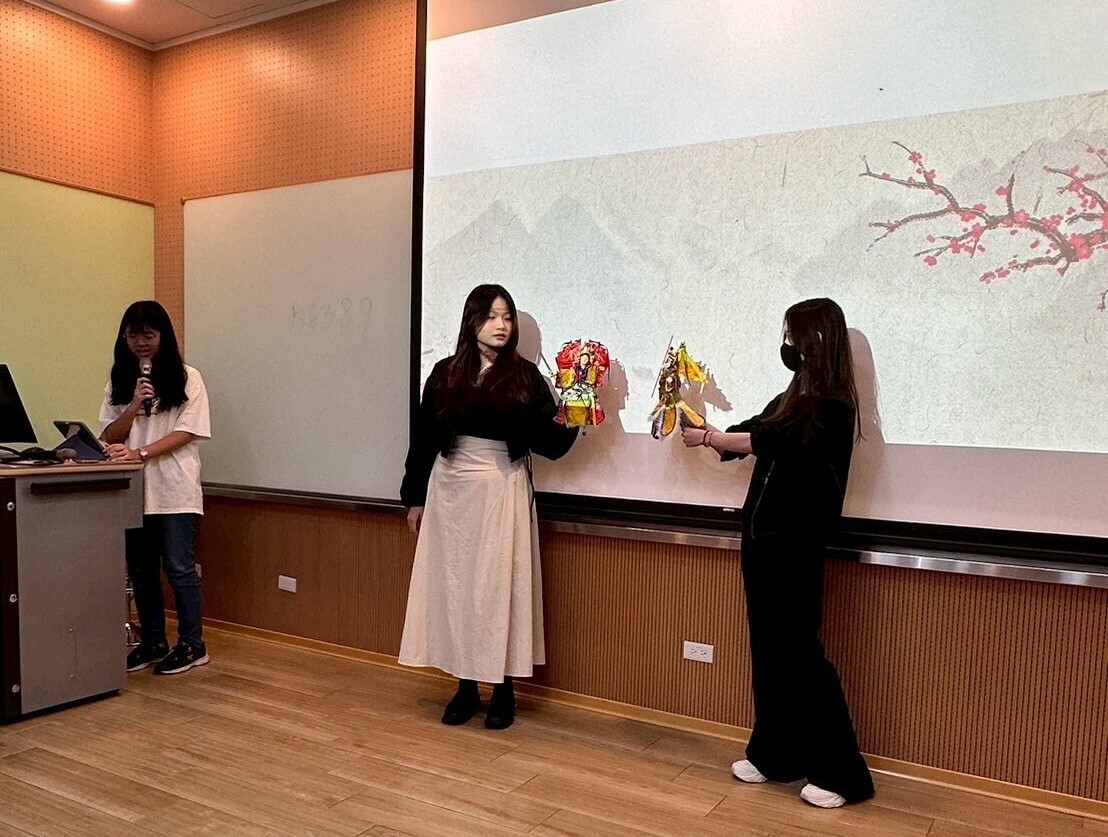
Hakka opera includes performances such as Hakka-language puppet theater, allowing students to experience the beauty and charm of the Hakka language.
This 2-credit general education course combines both theory and practice. It introduces students to the historical origins of Hakka culture, as well as the development and characteristics of xiao xi (short plays) and da xi (grand operas) in Hakka theater. Teaching activities incorporate design elements such as traditional Hakka floral fabrics, allowing students to engage in hands-on creation. Through this process, students connect mind and heart, gaining a deep and tangible experience of cultural heritage.
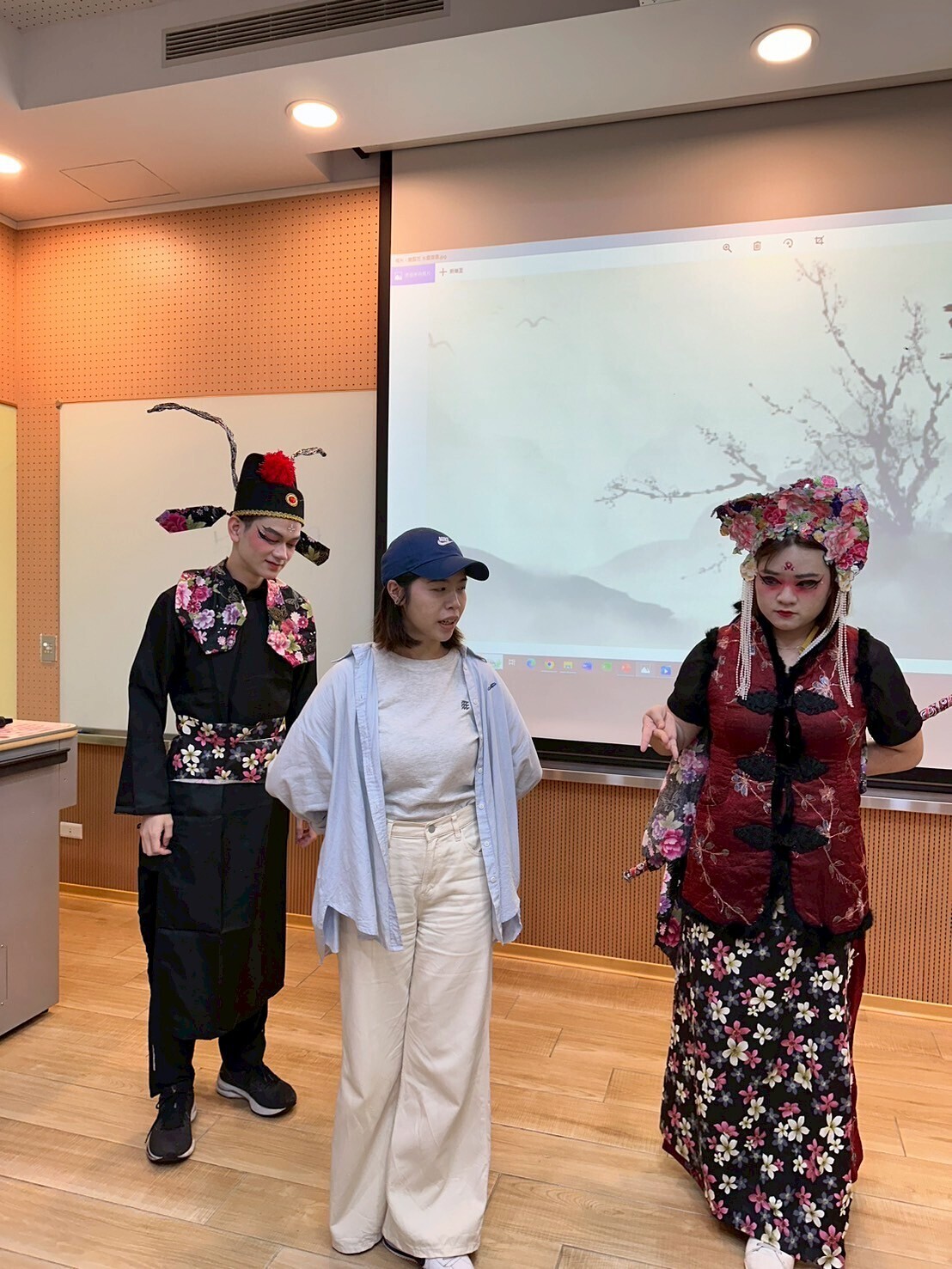
After the performance, teacher Meng-Shan Chiu (center) took the stage to coach students on Hakka opera movements and hand gestures.
Professor Mei-Fang Shih approached the course from the perspective of opera costume and makeup design, highlighting its connection to the aesthetics of Hakka culture. She emphasized that design is not merely about following trends - it must also stir cultural ripples that permeate every aesthetic detail. In Hakka culture, opera plays a vital role, expressing Hakka spirit and beauty through refined language and tone. Professor Shih noted that Hakka culture should be appreciated not only by Hakka communities, but by a broader audience as well. Leveraging the inherent appeal of traditional opera is an effective way to capture learners' attention and spark interest, paving the way for deeper cultural exploration. The course was structured to gradually introduce students to the essence of Hakka opera - from foundational cultural knowledge to makeup, costume design, props, gestures, and body movements. The semester culminated in a final performance showcasing students' learning achievements.
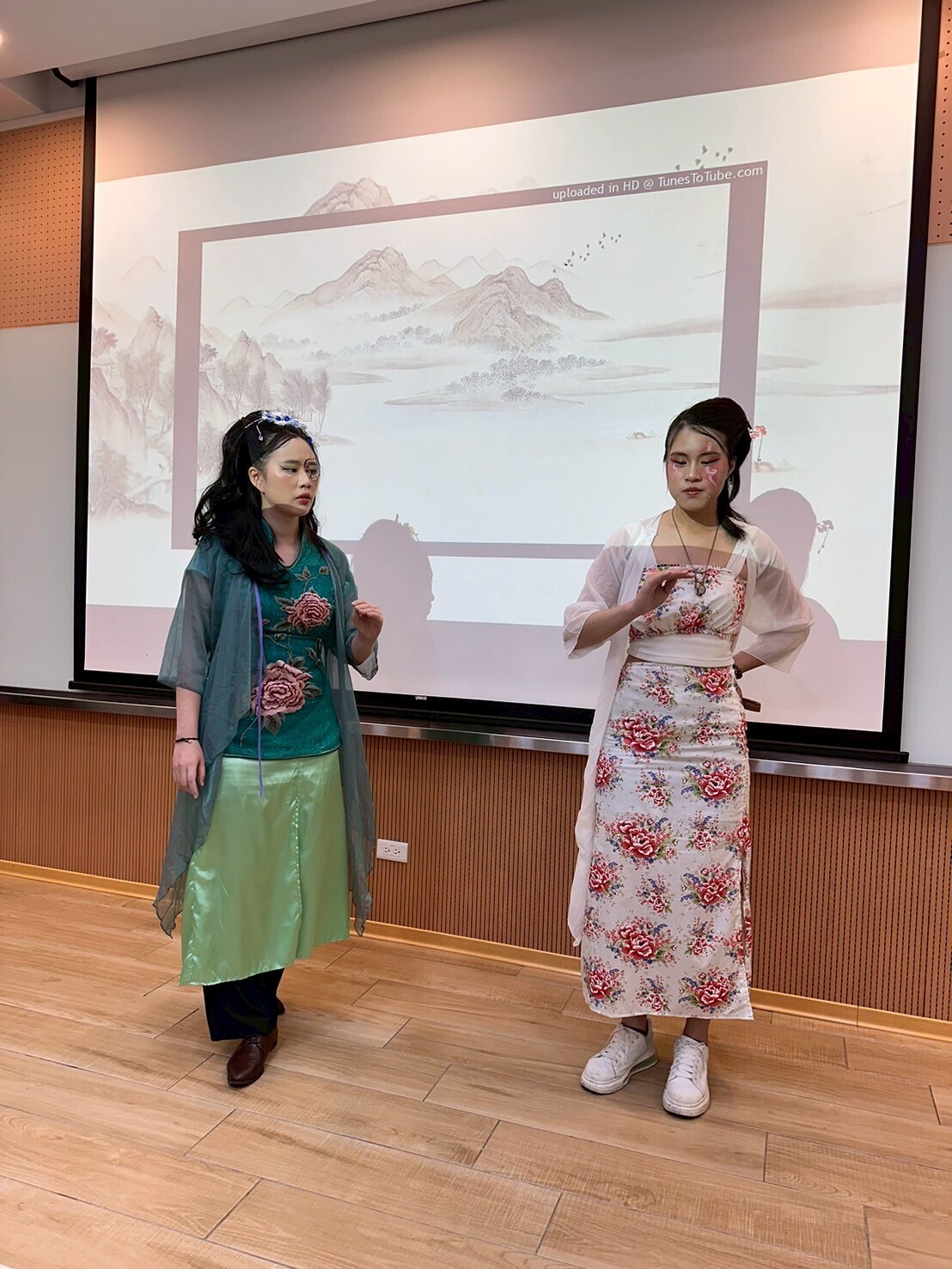
In the end-of-semester performance "The Legend of the Green and White Snake", students delivered a heartfelt and culturally immersive presentation. Though their Hakka-language singing and opera movements still carried traces of inexperience, the sincerity and effort they brought to the stage reflected a meaningful and profound engagement with Hakka culture.
Many students admitted feeling pressure at the thought of performing on stage. However, as the course progressed and the spirit of collaborative learning took hold, they gradually embraced the challenge. Students began earnestly practicing opera makeup and costumes, and took the initiative to deepen their learning of the Hakka language. Hsin-Yi Koo from the Department of Applied Foreign Languages shared that she asked her grandmother to read the script line by line in Hakka so she could practice pronunciation and memorization more effectively. Hsin-Ni Li from the Department of Architecture, who is of Hakka descent, laughed and said that despite her background, this was the most seriously she had ever studied the Hakka language.
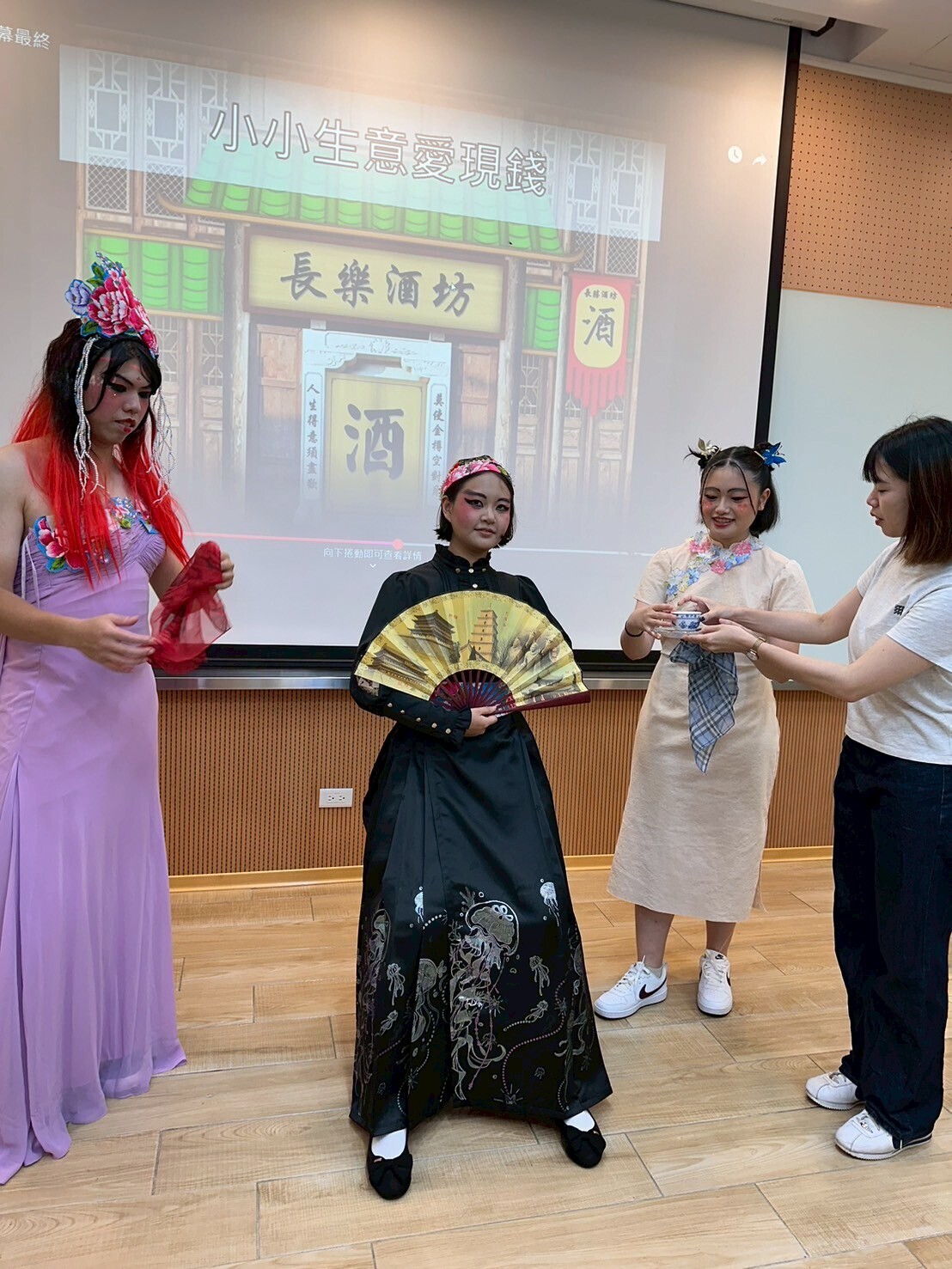
Students creatively reinterpreted the classic Hakka opera "Tiào-Jiú" ("Selling Wine"), designing all costumes and makeup themselves. Teacher Meng-Shan Chiu provided on-site guidance during the performance.
Student Chia-En Shih shared that she felt fortunate to have discovered a general education course on Hakka culture during her final semester before graduation. She expressed her happiness in seeing Hakka culture gaining more recognition and hoped more people would come to appreciate its unique beauty. The course integrated two aesthetic applications - makeup and stage design, alongside opera movement - and concluded with a rare and engaging format: each student group was required to perform a Hakka opera piece, either self-written or adapted from an existing script. Every aspect - from costumes and props to makeup and stage presentation - was considered and executed by the students themselves. Each member contributed their strengths to create a vibrant, collaborative performance. In "Selling Wine (Tiào-Jiú)", students transformed from passive learners into living embodiments of their characters, hoping to share the stories and emotions rooted in each role.
Lin Hsiang-Ting, a student from NTU's Department of Nursing, portrayed the role of Fan Li-Hua, a strong female warrior character known in traditional Chinese opera. From interpreting the role to designing the accessories, she gained invaluable experience. She incorporated Hakka floral fabric into her costume design - using its vibrant colors and patterns to reflect both the tenderness and resilience of Hakka women - adding a distinct cultural touch to the traditional opera look. She personally handcrafted headpieces and ornaments, combining floral fabric, sequins, and other decorative elements. Though the process was intricate and time-consuming, it gave her a deeper appreciation for the complexity and refinement of traditional opera costume design.
Through this experience, Lin came to truly appreciate the depth and artistry of Hakka opera styling and performance. Every detail - from costume to gesture - requires careful craftsmanship. Shaping her character deepened her admiration for the exquisite subtlety of traditional performing arts, while enhancing the cultural depth and visual presence of her role. To her, the floral fabric symbolizes the resilience and grace of Hakka women, perfectly mirroring the spirit of Fan Li-Hua.
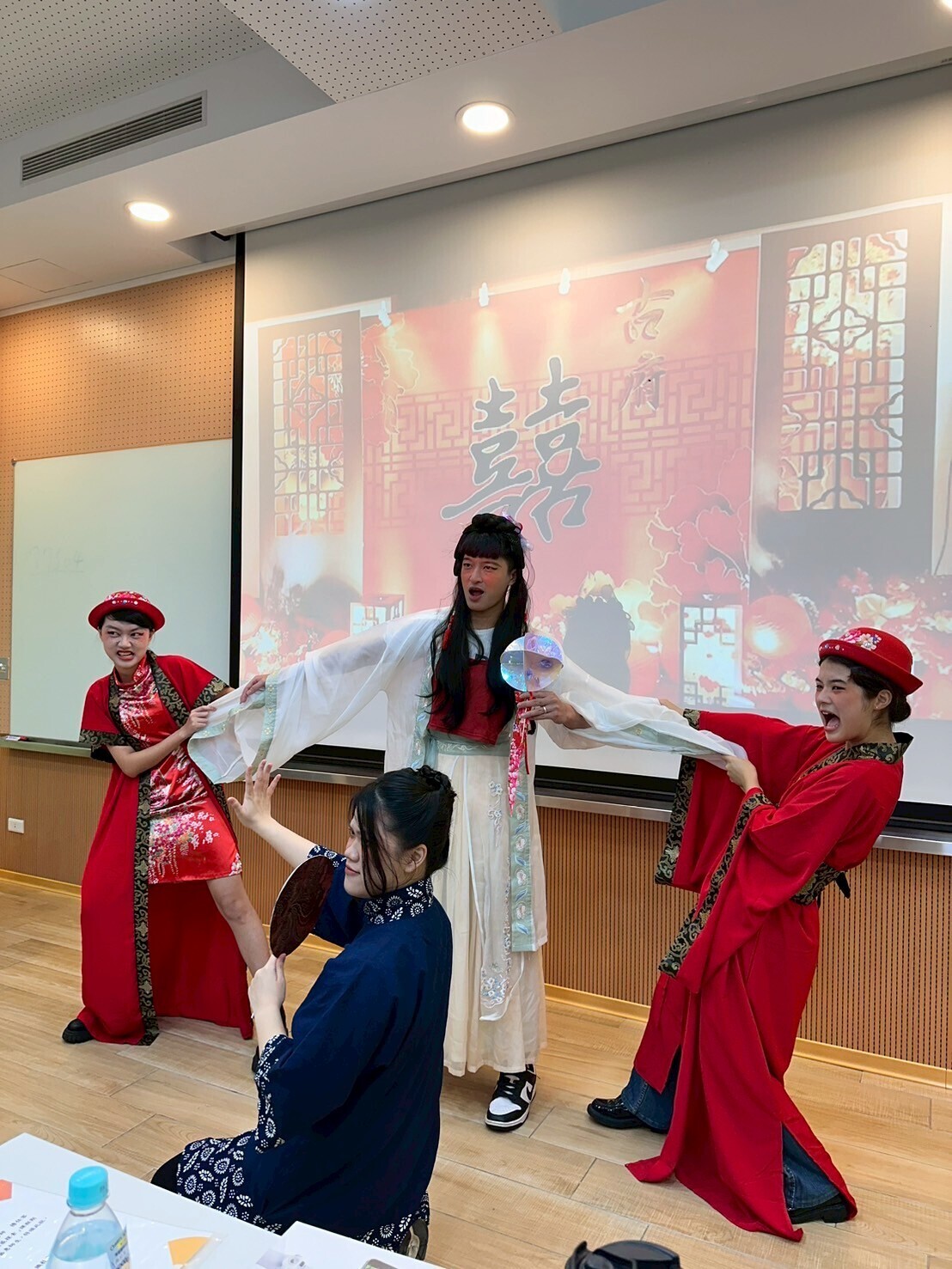
The performance titled "The Real and the Fake Groom" creatively blended Hakka, Taiwanese, and English languages, offering a fresh and engaging viewing experience. This innovative multilingual approach transformed traditional Hakka opera into a dynamic stage for cultural innovation.
On the day of the performance, Hakka opera performer and researcher Meng-Shan Chiu was invited to provide evaluation and guidance. As the final showcase unfolded, students appeared on stage wearing Hakka opera costumes and holding props they had created during the course. With sincere effort, they performed with Hakka-language lyrics and traditional gestures—though still somewhat unpolished, their dedication shone through. This deeply immersive engagement with Hakka culture became a formative and personal learning journey - etched into their inner memories and cultural understanding. Through this process, the students not only embodied the potential to contribute to the preservation and promotion of Hakka heritage, but also emerged as a new generation of tech-savvy talents capable of integrating culture, aesthetics, and innovation.
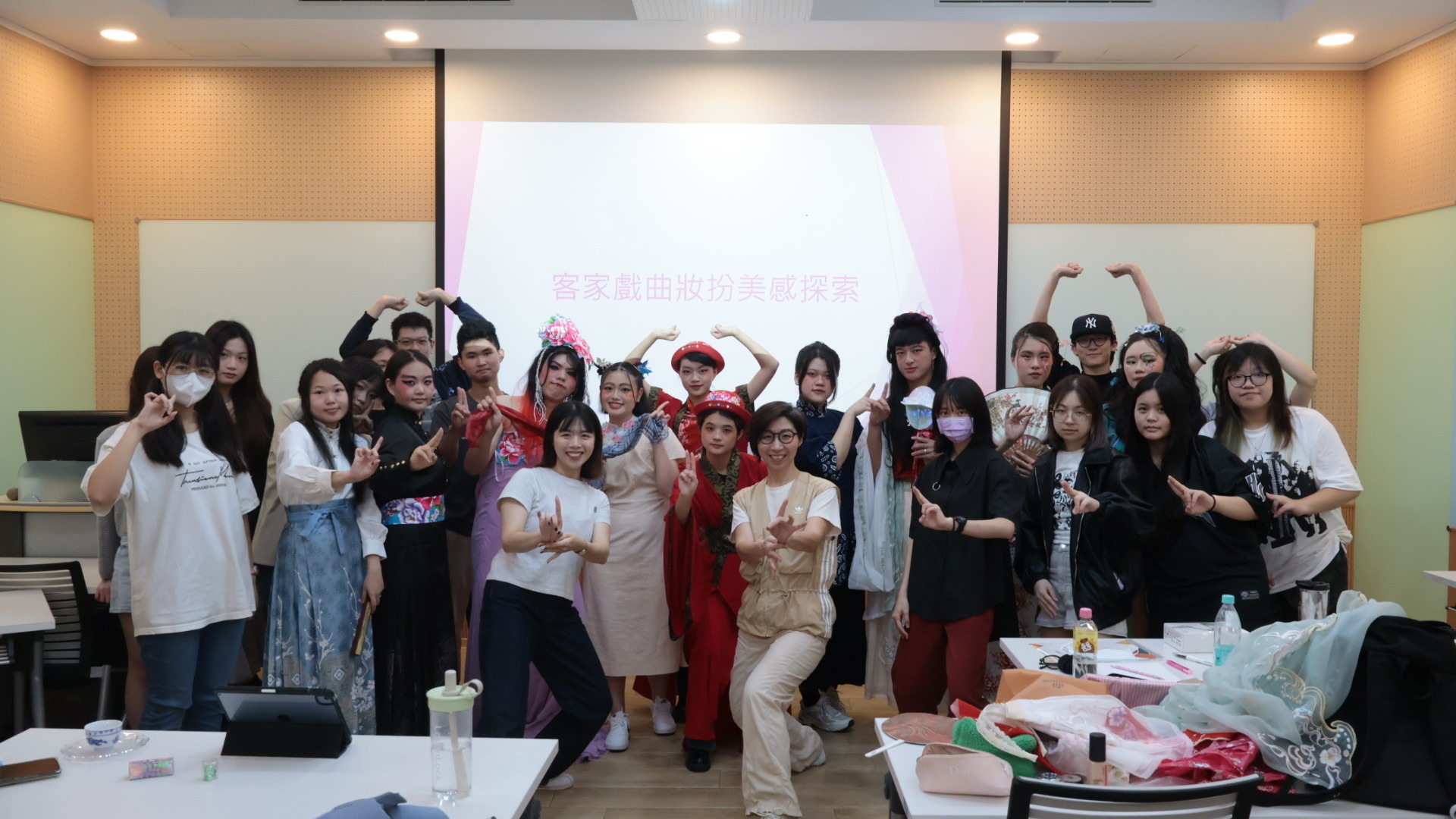
Through this general education course on Hakka culture, the seeds of cultural appreciation have been planted in the hearts of Taiwan Tech students. It is hoped that this effort will serve as a starting point to inspire more people to see, experience, and come to love the richness of Hakka culture.